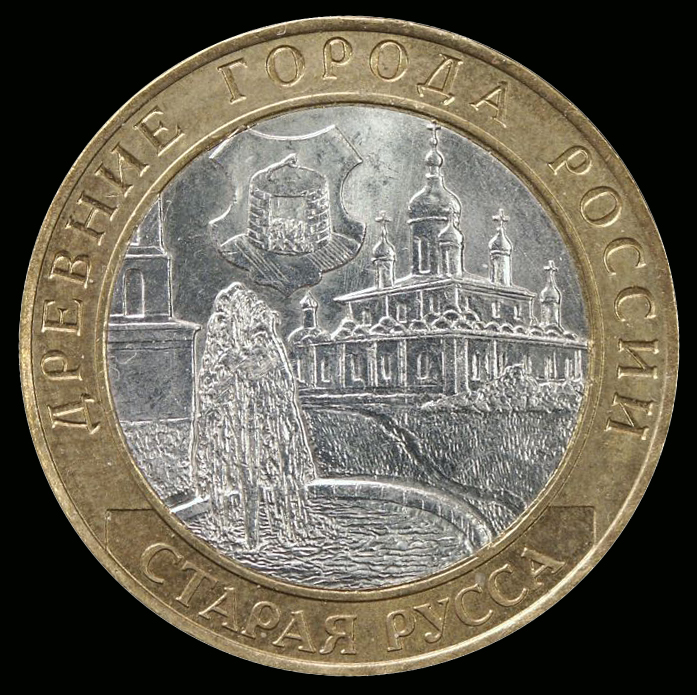|
Estonian Workers' Commune
The Commune of the Working People of Estonia ( et, Eesti Töörahva Kommuun, initially '; russian: Эстляндская трудовая коммуна , or ETK) was an unrecognised government claiming the Bolshevik-occupied parts of Republic of Estonia as its territories during the Estonian War of Independence and the Russian Civil War. Establishment and fall The Commune was established in Narva on 29 November 1918 with the support of the Red Army. It was chaired by Jaan Anvelt for the duration of its existence. Within areas of their control, the Commune closed churches, nationalised industry and the banks and outlawed representatives of the Provisional Government. The Communist offensive was initially successful and eventually reached as far as 34 kilometres from Tallinn. However, a counter-offensive begun on 7 January 1919 by the Estonian People's Force (''Rahvavägi'') under Commander-in-Chief Johan Laidoner eventually drove the Red Army out of Estonia, with internatio ... [...More Info...] [...Related Items...] OR: [Wikipedia] [Google] [Baidu] |
RSFSR
The Russian Soviet Federative Socialist Republic, Russian SFSR or RSFSR ( rus, Российская Советская Федеративная Социалистическая Республика, Rossíyskaya Sovétskaya Federatívnaya Socialistíčeskaya Respúblika, rɐˈsʲijskəjə sɐˈvʲetskəjə fʲɪdʲɪrɐˈtʲivnəjə sətsɨəlʲɪˈsʲtʲitɕɪskəjə rʲɪˈspublʲɪkə, Ru-Российская Советская Федеративная Социалистическая Республика.ogg), previously known as the Russian Soviet Republic and the Russian Socialist Federative Soviet Republic as well as being unofficially known as Soviet Russia,Declaration of Rights of the laboring and exploited people, article I. the Russian Federation or simply Russia, was an Independence, independent Federalism, federal socialist state from 1917 to 1922, and afterwards the largest and most populous of the Republics of the Soviet Union, Soviet socialist republics of the So ... [...More Info...] [...Related Items...] OR: [Wikipedia] [Google] [Baidu] |
Tallinn
Tallinn () is the most populous and capital city of Estonia. Situated on a bay in north Estonia, on the shore of the Gulf of Finland of the Baltic Sea, Tallinn has a population of 437,811 (as of 2022) and administratively lies in the Harju ''maakond'' (county). Tallinn is the main financial, industrial, and cultural centre of Estonia. It is located northwest of the country's second largest city Tartu, however only south of Helsinki, Finland, also west of Saint Petersburg, Russia, north of Riga, Latvia, and east of Stockholm, Sweden. From the 13th century until the first half of the 20th century, Tallinn was known in most of the world by variants of its other historical name Reval. Tallinn received Lübeck city rights in 1248,, however the earliest evidence of human population in the area dates back nearly 5,000 years. The medieval indigenous population of what is now Tallinn and northern Estonia was one of the last " pagan" civilisations in Europe to adopt Christianit ... [...More Info...] [...Related Items...] OR: [Wikipedia] [Google] [Baidu] |
Johannes Käspert
Johannes is a Medieval Latin form of the personal name that usually appears as "John" in English language contexts. It is a variant of the Greek and Classical Latin variants (Ιωάννης, ''Ioannes''), itself derived from the Hebrew name '' Yehochanan'', meaning "Yahweh is gracious". The name became popular in Northern Europe, especially in Germany because of Christianity. Common German variants for Johannes are ''Johann'', ''Hannes'', ''Hans'' (diminutized to ''Hänschen'' or ''Hänsel'', as known from "''Hansel and Gretel''", a fairy tale by the Grimm brothers), '' Jens'' (from Danish) and ''Jan'' (from Dutch, and found in many countries). In the Netherlands, Johannes was without interruption the most common masculine birth name until 1989. The English equivalent for Johannes is John. In other languages *Joan, Jan, Gjon, Gjin and Gjovalin in Albanian *'' Yoe'' or '' Yohe'', uncommon American form''Dictionary of American Family Names'', Oxford University Press, 2013. *Yaḥy� ... [...More Info...] [...Related Items...] OR: [Wikipedia] [Google] [Baidu] |
Viktor Kingissepp
Viktor Eduard Kingissepp ( in Karmel (now ) – 4 May 1922 in Tallinn) was an Estonian communist politician, the leader of the Estonian Communist Party. The son of a factory worker, he joined a Marxist circle as a schoolboy in Arensburg (now ) (which was renamed Kingissepp in 1952, but was restored to its original Estonian name in 1988), and organised the Estonian section of the Russian Social Democratic Labour Party, in St Petersburg. During the war with Germany, he was put in charge of a medical train on the Western Front. After the February revolution, he returned to Petrograd (as St Petersburg was now named), and joined the Bolsheviks and the Red Guards. After the Bolshevik Revolution, he was deputy chairman of the Estonian Revolutionary Soviet in Reval (now ), but fled back to Petrograd after Estonia was occupied by the German army. He joined the Cheka, and in August 1918 carried out the arrest of Fanny Kaplan, who had shot and attempted to kill Lenin. He returned to Esto ... [...More Info...] [...Related Items...] OR: [Wikipedia] [Google] [Baidu] |
Platon (Kulbusch)
Platon, born Paul Kulbusch (also spelled ''Kuhlbusch'' or ''Kuldbush''; – 14 January 1919) was an Estonian bishop and the first Orthodox saint of Estonian ethnicity."Platon, Bishop of Estonia" ''Estonica - Encyclopedia about Estonia'', Estonian Institute. History Paul Kulbusch was born on in Pootsi, Pärnumaa, in the southwest of present-day (then part of ).P ...[...More Info...] [...Related Items...] OR: [Wikipedia] [Google] [Baidu] |
Tartu Credit Center Massacre
The Tartu Credit Center Massacre () was the mass murder of 19 people in the basement of the former Credit Center in Tartu on 14 January 1919. The execution was carried out just before the Bolsheviks withdrew from Tartu by order of the Estonian Counter-Revolutionary Commission of the Commune of the Working People of Estonia. Its best-known victim was Platon, the first Estonian Orthodox bishop. Historical Context The massacre of the Tartu Credit Union is located in the context of a policy of intimidation and destruction behind the Red Army, which is called Red Terror. The basis of the Red Terror in Soviet Russia was the Decree of 5 September 1918 on the Red Terror, which ordered the shooting of so-called enemies of the people or their placement in concentration camps. On the territory of Estonia, the Red Terror was carried out between 1918 and 1919 on the territory under the control of the Commune of the Working People of Estonia. Massacre Immediately before the liberation of ... [...More Info...] [...Related Items...] OR: [Wikipedia] [Google] [Baidu] |
Treaty Of Tartu (Russian–Estonian)
Treaty of Tartu may refer to: * Treaty of Tartu (Estonia–Russia) * Treaty of Tartu (Finland–Russia) , image = Treaty-of-Tartu.png , image_width = 150px , caption = The Finland–Russia border as decided in the Treaty of Tartu. Petsamo (red) became part of Finland, while Repola and Porosozero, Porajärvi (green ... See also * Treaty of Dorpat, a Russo-Swedish treaty of 1564 {{disambig ... [...More Info...] [...Related Items...] OR: [Wikipedia] [Google] [Baidu] |
Russian Soviet Federative Socialist Republic
The Russian Soviet Federative Socialist Republic, Russian SFSR or RSFSR ( rus, Российская Советская Федеративная Социалистическая Республика, Rossíyskaya Sovétskaya Federatívnaya Socialistíčeskaya Respúblika, rɐˈsʲijskəjə sɐˈvʲetskəjə fʲɪdʲɪrɐˈtʲivnəjə sətsɨəlʲɪˈsʲtʲitɕɪskəjə rʲɪˈspublʲɪkə, Ru-Российская Советская Федеративная Социалистическая Республика.ogg), previously known as the Russian Soviet Republic and the Russian Socialist Federative Soviet Republic as well as being unofficially known as Soviet Russia,Declaration of Rights of the laboring and exploited people, article I. the Russian Federation or simply Russia, was an Independence, independent Federalism, federal socialist state from 1917 to 1922, and afterwards the largest and most populous of the Republics of the Soviet Union, Soviet socialist republics of the So ... [...More Info...] [...Related Items...] OR: [Wikipedia] [Google] [Baidu] |
Staraya Russa
Staraya Russa ( rus, Старая Русса, p=ˈstarəjə ˈrusːə) is a town in Novgorod Oblast, Russia, located on the Polist River, south of Veliky Novgorod, the administrative center of the oblast. Its population has steadily decreased over the past years, going from 41,538 recorded in the 1989 Census to 35,511 in the 2002 Census to 31,809 in the 2010 Census. Etymology The origin of the name of Staraya Russa is unclear. The most involved and widespread hypothesis was presented by philologists and linguists R. A. Akheyeva, V. L. Vasilyev, and M.V. Gorbanevsky. According to this hypothesis, ''Russa'' comes from Rus'—a Slavic people, who settled in the vicinity to control trade routes leading from Novgorod to Polotsk and Kiev—which, in turn, is usually thought to originate from an Old Norse term for "the men who row" (''rods-'') as rowing was the main method of navigating the rivers of Eastern Europe, and that it could be linked to the Swedish coastal ... [...More Info...] [...Related Items...] OR: [Wikipedia] [Google] [Baidu] |
Luga, Leningrad Oblast
Luga (russian: Лу́га; Finnish: ''Ylä-Laukaa'' or ''Laukaa''; vot, Laugaz; et, Luuga) is a town and the administrative center of Luzhsky District in Leningrad Oblast, Russia, located on the Luga River south of St. Petersburg. Population: History It was founded on the banks of the river of that name by order of the Catherine the Great on August 3 (14), 1777. The town developed in following stages: #Initial construction (1777–c. 1800) #Early growth to population of 3,000 (c. 1810–c. 1860) #Intense social and urban development (c. 1870–1910) #Soviet development according to the typical plan for smaller towns (1926–c. 1950) #Reconstruction of the historical town structure (c. 1960–c. 1995) #Transition to free market agro-industrial town (c. 1995–2005) Luga was founded as a town in Pskov Viceroyalty, but in March 3 (14), 1782 it was transferred to St. Petersburg Governorate (renamed Petrogra ... [...More Info...] [...Related Items...] OR: [Wikipedia] [Google] [Baidu] |
Pskov
Pskov ( rus, Псков, a=pskov-ru.ogg, p=pskof; see also names in other languages) is a city in northwestern Russia and the administrative center of Pskov Oblast, located about east of the Estonian border, on the Velikaya River. Population: Pskov is one of the oldest cities in Russia. It served as the capital of the Pskov Republic and was a trading post of the Hanseatic League before it came under the control of the Grand Duchy of Moscow. History Early history Pskov is one of the oldest cities in Russia. The name of the city, originally Pleskov (historic Russian spelling , ''Plěskov''), may be loosely translated as "he townof purling waters". It was historically known in English as Plescow. Its earliest mention comes in 903, which records that Igor of Kiev married a local lady, Olga (later Saint Olga of Kiev). Pskovians sometimes take this year as the city's foundation date, and in 2003 a great jubilee took place to celebrate Pskov's 1,100th anniversary. The f ... [...More Info...] [...Related Items...] OR: [Wikipedia] [Google] [Baidu] |
Government In Exile
A government in exile (abbreviated as GiE) is a political group that claims to be a country or semi-sovereign state's legitimate government, but is unable to exercise legal power and instead resides in a foreign country. Governments in exile usually plan to one day return to their native country and regain formal power. A government in exile differs from a rump state in the sense that a rump state controls at least part of its former territory. For example, during World War I, nearly all of Belgium was occupied by Germany, but Belgium and its allies held on to a small slice in the country's west. A government in exile, in contrast, has lost all its territory. However, in practice the difference might be minor; in the above example, the Belgian government at Sainte-Adresse was located in French territory and acted as a government in exile for most practical purposes. The governments in exile tend to occur during wartime occupation or in the aftermath of a civil war, revolution, ... [...More Info...] [...Related Items...] OR: [Wikipedia] [Google] [Baidu] |




